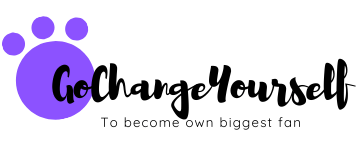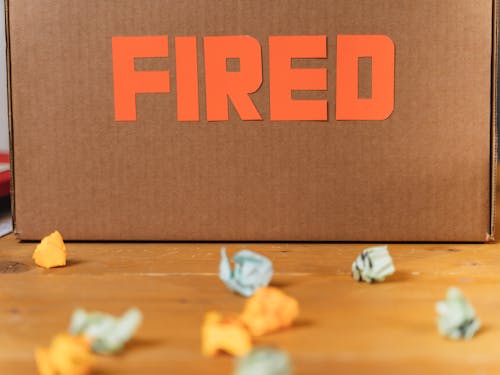Starting a fitness journey can feel overwhelming, but the key to success is simple: take action today. Whether your goal is to lose weight, gain muscle, or improve overall health, the best time to start is NOW.
This guide on “My Fitness Journey” will walk you through a step-by-step plan to help you stay committed, motivated, and on track. With the right mindset and a structured approach, your fitness goals are within reach.
Table of Contents
Step 1: Define Your Fitness Goals
Before you start, it’s essential to set clear, realistic goals. Ask yourself:
- Do I want to lose weight, build muscle, or improve endurance?
- What is my target timeframe?
- How will I measure my progress?
SMART goals (Specific, Measurable, Achievable, Relevant, and Time-bound) are the foundation of a successful fitness journey. For example, instead of saying, “I want to lose weight,” say, “I want to lose 10 pounds in three months by exercising five days a week and eating healthier.”
Step 2: Create a Workout Plan That Works for You
The best workout plan is the one you can stick to. Consider your fitness level, schedule, and interests when choosing exercises. Here’s a simple breakdown:
- Beginners: Start with bodyweight exercises like squats, lunges, and push-ups.
- Intermediate: Incorporate resistance training, weightlifting, and cardio workouts.
- Advanced: Focus on progressive overload and structured training programs.
Aim for at least 150 minutes of moderate-intensity exercise per week or 75 minutes of high-intensity exercise.
Step 3: Prioritize Nutrition
Exercise alone isn’t enough—you need proper nutrition to fuel your progress. Follow these guidelines:
- Eat a balanced diet with lean proteins, healthy fats, and complex carbohydrates.
- Stay hydrated by drinking plenty of water throughout the day.
- Avoid processed foods and excessive sugar intake.
- Plan your meals in advance to avoid unhealthy choices.
A simple rule to follow is the 80/20 approach: eat clean 80% of the time and allow yourself some flexibility for treats 20% of the time.
Step 4: Stay Consistent and Build Habits
Fitness is a lifestyle, not a temporary fix. Building consistency requires discipline, so focus on:
- Scheduling workouts like appointments.
- Finding an accountability partner or joining a fitness community.
- Tracking progress with a journal or fitness app.
- Setting reminders and alarms to stay on schedule.
Even if you miss a workout or eat something unhealthy, don’t get discouraged—get back on track immediately.
Step 5: Track Your Progress
Measuring progress keeps you motivated and allows you to make necessary adjustments. Ways to track your fitness journey include:
- Taking weekly progress photos.
- Logging workouts and improvements in strength or endurance.
- Using apps or wearables to monitor activity levels and calories burned.
- Keeping a fitness journal to record thoughts, challenges, and victories.
Tracking your progress helps you stay accountable and see tangible results over time.
Step 6: Prioritize Rest and Recovery
Overtraining can lead to injuries and burnout. Your body needs time to repair and grow stronger. Make sure to:
- Get 7-9 hours of sleep per night.
- Take rest days to allow muscle recovery.
- Incorporate stretching, yoga, or mobility work into your routine.
- Listen to your body—if you feel fatigued, take a break.
A well-rested body performs better, recovers faster, and stays injury-free.
Step 7: Stay Motivated and Adapt
Motivation fluctuates, so focus on creating discipline instead. Here’s how to stay inspired:
- Set mini-goals and celebrate small victories.
- Change your routine to keep workouts exciting.
- Follow fitness influencers or join online groups for inspiration.
- Remind yourself of your “why” and visualize your success.
Fitness is a lifelong journey—embrace the ups and downs and keep pushing forward.
Conclusion
Your fitness journey starts now! By following this 7-step plan, you’ll build a solid foundation on “My Fitness Journey” for long-term success.
Remember, consistency is key, and progress takes time. Set your goals, stay dedicated, and enjoy the process. The hardest step is starting—so take action today and commit to becoming the best version of yourself!
FAQ:
How do I start my fitness journey?
Start by setting clear and realistic goals, creating a workout plan, and focusing on consistency. Follow a structured approach and take action today.
What are SMART fitness goals?
SMART goals are Specific, Measurable, Achievable, Relevant, and Time-bound, making it easier to track progress and stay motivated.
How often should I exercise per week?
Aim for at least 150 minutes of moderate-intensity exercise or 75 minutes of high-intensity exercise per week.
What type of workout is best for beginners?
Beginners should start with bodyweight exercises like squats, lunges, push-ups, and light cardio workouts.
What is the 80/20 rule in fitness nutrition?
The 80/20 rule suggests eating clean and healthy 80% of the time while allowing some flexibility for treats 20% of the time.
How important is nutrition in a fitness journey?
Nutrition is crucial as it fuels your body, supports muscle recovery, and enhances overall performance.
How can I stay consistent with my workouts?
Schedule workouts, find an accountability partner, track progress, and create habits that make exercise a regular part of your routine.
How do I measure my fitness progress?
Track progress through weekly photos, workout logs, fitness apps, or by monitoring strength and endurance improvements.
Should I track my calorie intake?
While not mandatory, tracking calories can help maintain a balanced diet and ensure you’re eating the right amount for your goals.
How much sleep do I need for muscle recovery?
Aim for 7-9 hours of sleep per night to allow your body to recover and perform optimally.
Why are rest days important?
Rest days help prevent injuries, reduce fatigue, and allow muscles to recover and grow stronger.
How can I stay motivated on my fitness journey?
Set mini-goals, celebrate small victories, switch up workouts, and remind yourself why you started.
What should I do if I miss a workout?
Don’t stress—get back on track the next day and stay committed to your overall plan.
Can I lose weight with exercise alone?
Exercise helps, but proper nutrition plays a bigger role in weight loss. A combination of both is most effective.
How do I avoid fitness burnout?
Incorporate rest days, mix up workouts, and listen to your body to prevent exhaustion and loss of motivation.
What’s the best way to build muscle?
Focus on progressive overload, resistance training, and consuming adequate protein.
Can I start a fitness journey at any age?
Absolutely! Fitness is for everyone, and it’s never too late to start making healthy changes.
Should I do cardio or strength training first?
It depends on your goals—do cardio first for endurance training and strength training first for muscle growth.
How long does it take to see fitness results?
Visible results vary, but most people see noticeable changes in 4-8 weeks with consistent effort.
What’s the biggest mistake beginners make?
Many beginners set unrealistic goals, overtrain, or neglect proper nutrition, leading to frustration and burnout.
-
10 Superfoods for Healthy Eyes That Boost Your Vision
Let’s be honest — we don’t always treat our eyes the way they deserve. From binge-watching late-night shows to scrolling endlessly through social media, our vision takes a lot. The problem? We often forget how crucial eye health really is… until something starts to go wrong. The good news? You don’t need to wait for…
-
Importance of Taking Risks for Success
Let’s face it—taking risks is scary. Whether it’s quitting a job, starting a business, or even just speaking up in a meeting, the idea of stepping outside what’s familiar can feel downright uncomfortable. But here’s the thing: most people who achieve real success didn’t get there by playing it safe. They took leaps. They bet…
-
What to do After Layoff ? | 7 Steps to Bounce Back Stronger and Smarter
Losing your job is one of those moments that just hits differently. It’s not just about the paycheck—it’s about routine, identity, even pride. One minute you’re gearing up for a busy quarter, and the next, you’re trying to figure out what the heck just happened. If you’re sitting there wondering what to do after layoff,…







